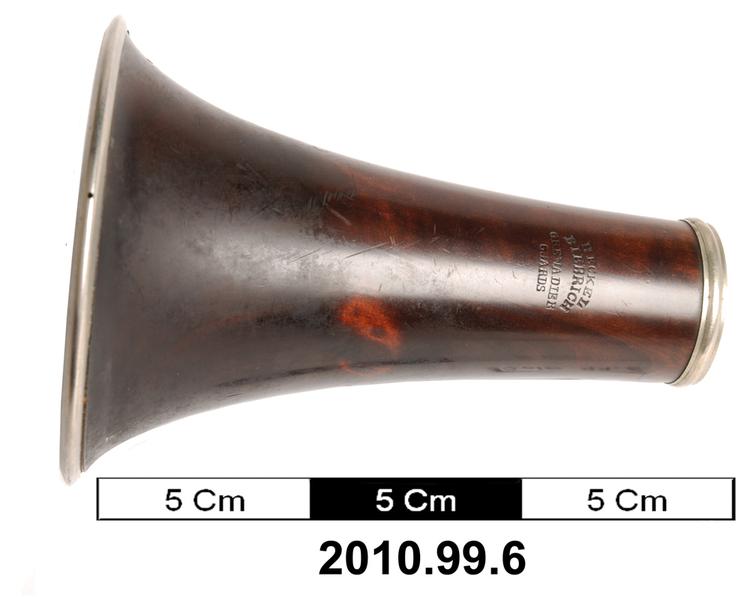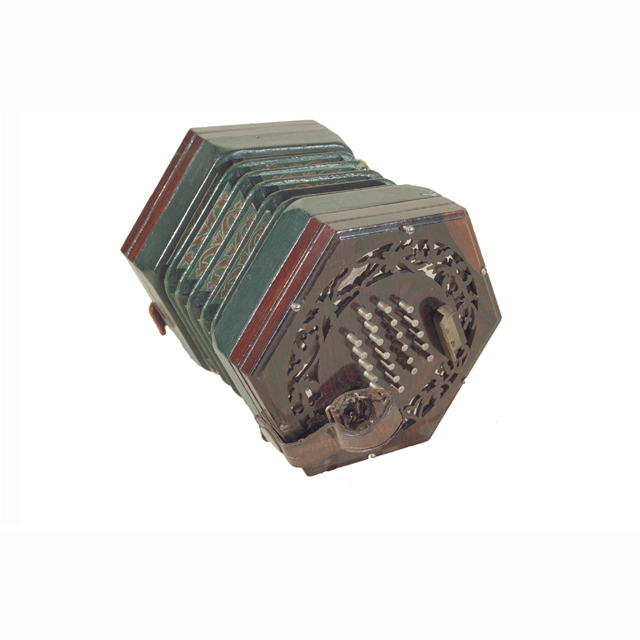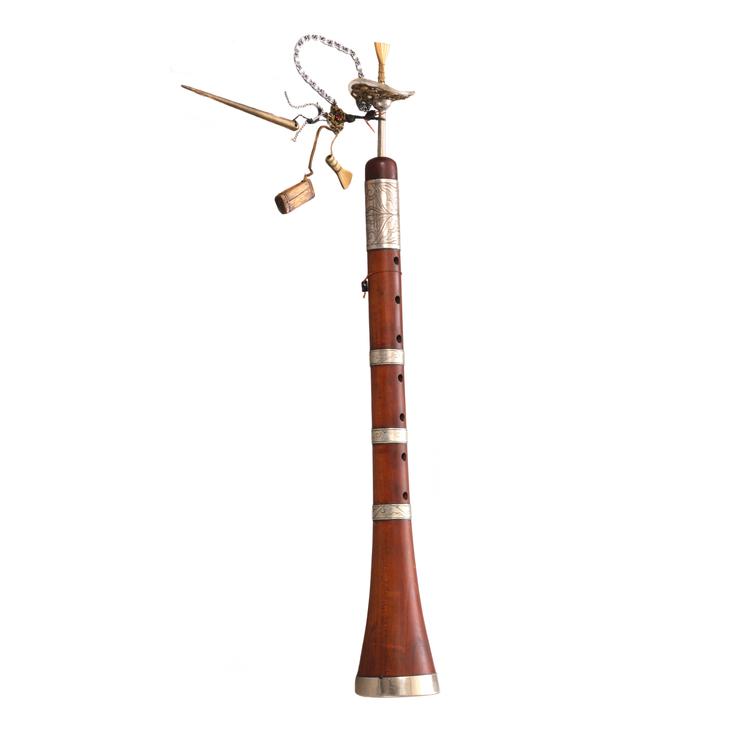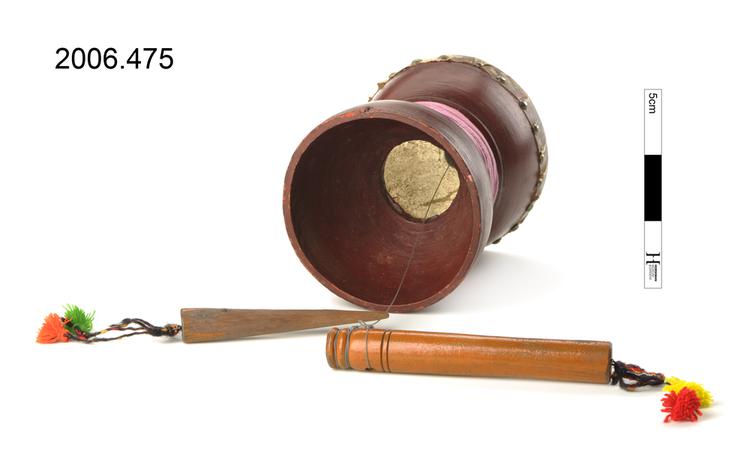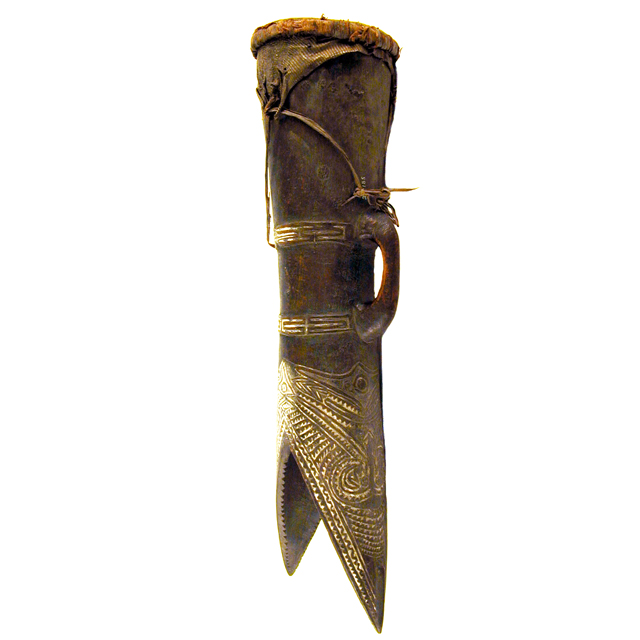
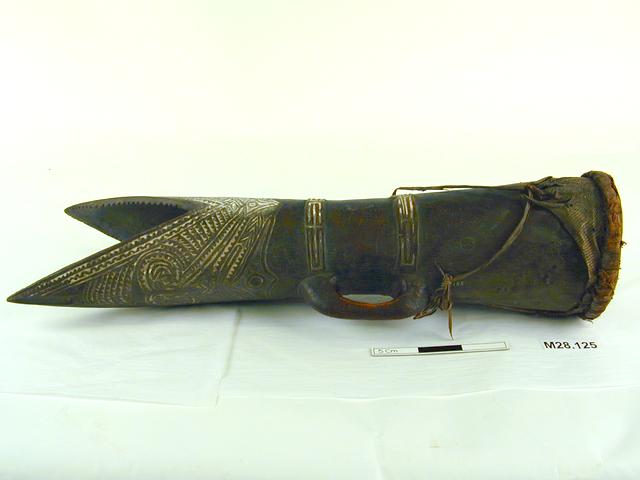
Waisted hour glass shape drum with a skin of monitor lizard bound on with a ring of cane. The open end of the drum is formed into a V shape mouth with two painted beak-like projections. The lower half of the drum is engraved with facial motifs surrounded by meandering curvilinear forms and zig zag infilling which is inlaid with white lime paint.
Drum, Aopa, Purari River Delta, Gulf Province, Papua New Guinea The aopa drums of the Purari delta share some features with the other drums of New Guinea, and have some features that are distinctive. Many drums of southern New Guinea have a narrow ‘waist’ that gives them an hourglass shape, but most have two squared-off ends. Those of the Purari and other river deltas around the Papuan Gulf, have an open end opposite the drum skin that takes the form of two pointed jaws. The surface engraving is also distinctive of the Papuan Gulf cultures. For the peoples of the Purari delta, one of the great heroes of ancient times was a man by the name of Iko. According to legends, Iko came into the Purari delta from the west, bringing the knowledge of many good things with him. This included how to grow and consume coconuts, and the methods of making and playing aopa drums. Wood, reptile skin, split bamboo, pigment. Circa 1900. Collected by Dr Emile Clement and purchased by the Museum in 1928.




